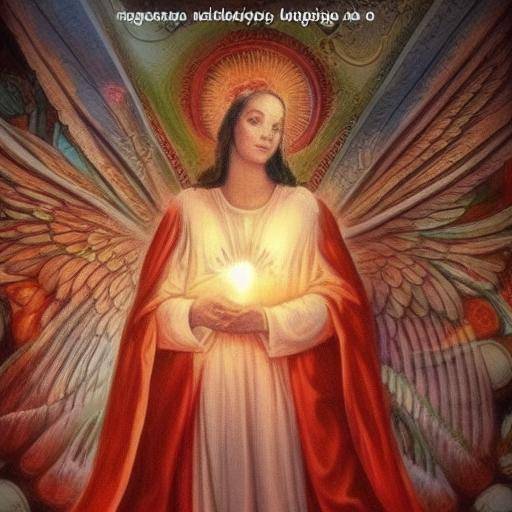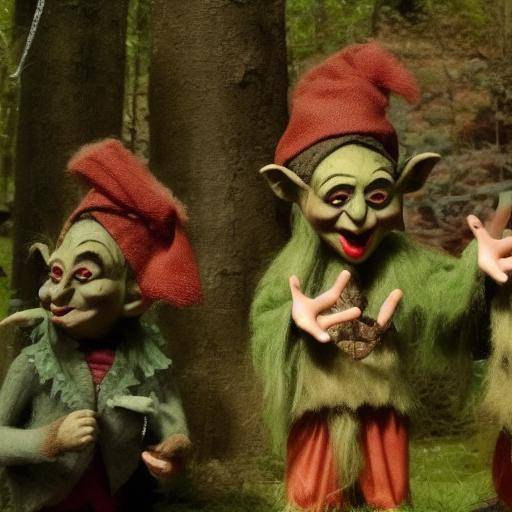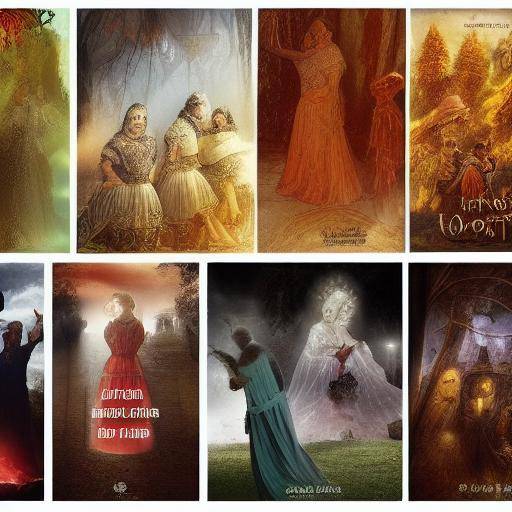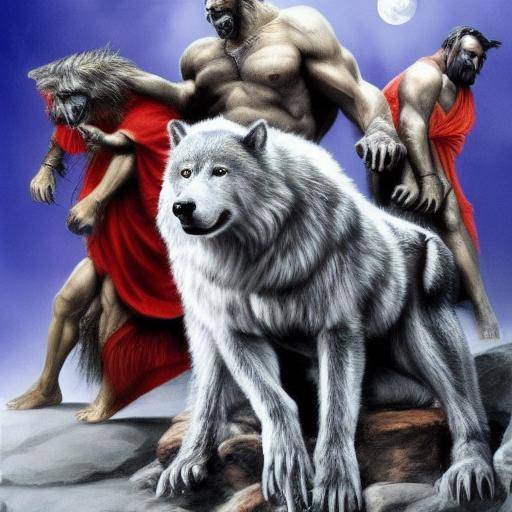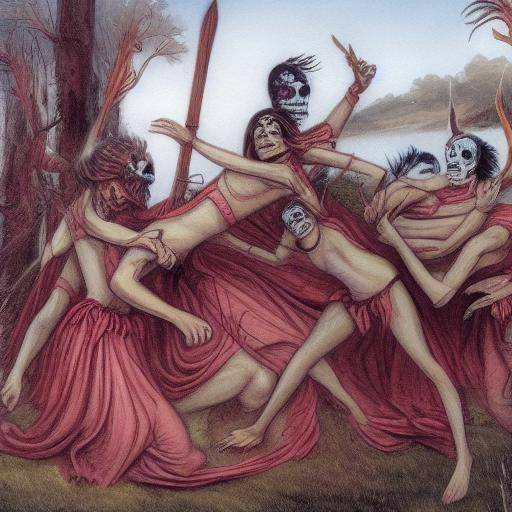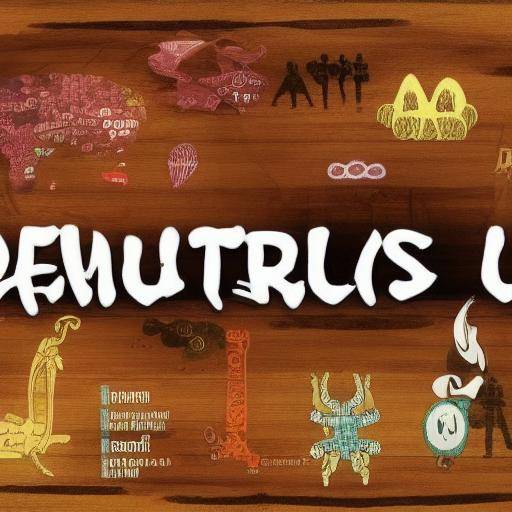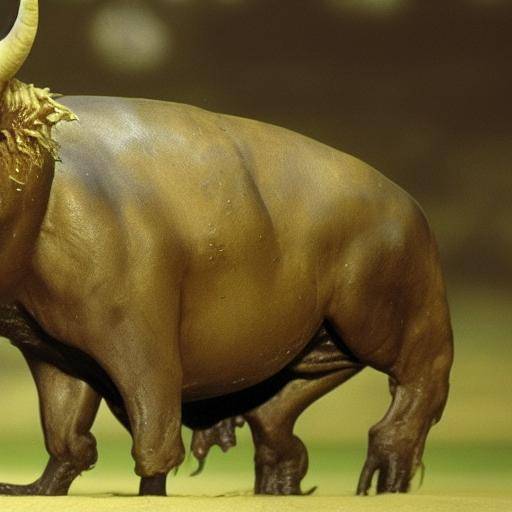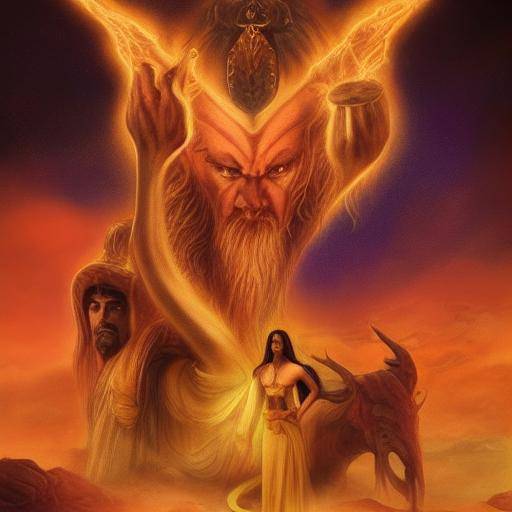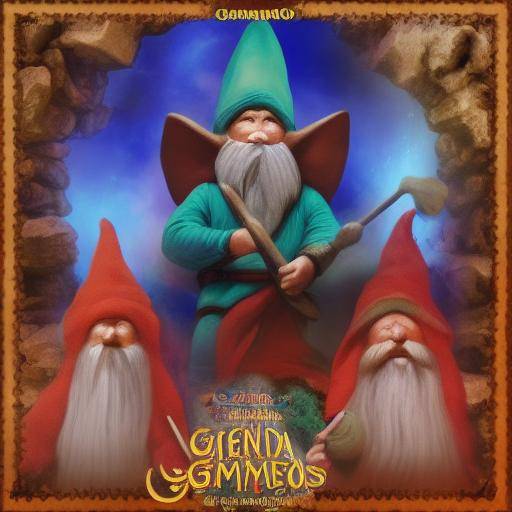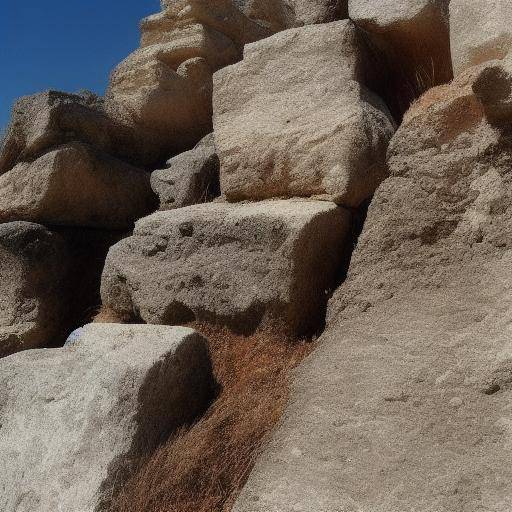
The Wendigo is a fascinating and terrifying figure present in the native folklore of various indigenous cultures, especially in the mythology of the Algonquin peoples. This supernatural being embodies greed, cannibalism and unbridled evil, making it the symbol of a dark and destructive force. In this article, we will explore in detail the history, cultural meaning and contemporary implications of the Wendigo, as well as its relationship with other supernatural beings and native folklore.
Introduction
The Wendigo has captivated the imagination of generations, inspiring stories, films and academic discussions. In the Algonquin mythology and other Native American traditions, the Wendigo represents the embodiment of insatiable greed and unbridled destruction, a force that lurks deep into the forests and lurks the unsuspected. Throughout this article, we will immerse ourselves in the vast and rich history of this cannibal spirit, exploring its origin, its impact on culture and its meaning in the modern world.
History and Background
The history of the Wendigo dates back to the beliefs and mythologies of the indigenous peoples, who shared stories about this fearful being long before the arrival of the European colonizers. In its original form, the Wendigo was seen as a skeletal, hungry and ruthless creature, which was lurking in the frozen forests of the north, often associated with winter and extreme famine. Over time, the Wendigo stories evolved, adapting to different cultures and acquiring new symbolic nuances.
Native American communities transmitted stories about the Wendigo from generation to generation, warning about the dangers of greed and the loss of humanity. Cannibalism, represented by the Wendigo, was considered a forbidden taboo, and his mere mention evoked fear and repulsion. Belief in the existence of the Wendigo influenced social practices and cultural norms, serving as a moral warning and a way of maintaining balance in the community.
In Deep: Detailed Analysis
The impact of the Wendigo myth extends beyond its symbolic meaning. The influence of Wendigo in native folklore has transcended cultural barriers and continues to resonate in collective consciousness. The representation of the Wendigo in literature, cinema and other forms of art has contributed to its lasting presence in contemporary popular culture, keeping alive the fascination and fear of this mythical figure.
The complexity of the Wendigo as a cultural archetype has also awakened the interest of scholars and scholars, who have explored their psychological, sociological and anthropological ramifications. Some have related the Wendigo legend to psychological disorders, such as empathic insensitivity and unbridled greed, which provides a framework for understanding dark aspects of human nature.
Comprehensive review
The Wendigo, like other supernatural beings present in native folklore, raises questions about the nature of traditional beliefs and their relevance in contemporary society. Its influence transcends cultural borders, providing a point of connection between different communities and their respective cosmovisions. The continued presence of the Wendigo in popular culture and modern artistic expressions reveals its condition as a lasting symbol of fear and fascination.
Comparative analysis
Despite its differences, the Wendigo shares thematic features with other supernatural beings present in native folklore. The representation of supernatural forces incarnating dark aspects of humanity is a constant in many indigenous traditions. The exploration of these similarities and differences offers a broader view of the diversity and wealth of indigenous beliefs, as well as the universality of certain themes and motives in folk narratives.
Practical Tips and Accessible Recommendations
For those interested in further exploring the Wendigo theme and other supernatural beings of native folklore, it is recommended to immerse themselves in specialized literature, where detailed analysis and interdisciplinary perspectives can be found that will enrich the understanding of these mythological figures. Similarly, the exploration of contemporary Wendigo representations in art, cinema and literature provides a fascinating insight into how these ancestral traditions continue to resonate in today's culture.
Conclusions and FAQs
The Wendigo, as a manifestation of human fears and aspirations, transcends the barriers of time and space, maintaining its relevance in a constantly changing world. His presence in native folklore represents an invitation to reflect on the nature of humanity and the invisible forces that shape our reality. As we deepen in the legends and myths that have endured over the centuries, we discover treasures of wisdom and riddle that enrich our perception of the world we inhabit.
Frequently asked questions
1. What is the origin of the Wendigo myth?
The Wendigo myth originates in the traditions of the Algonquin peoples, especially in the northern regions of North America. It is considered a fearsome figure associated with winter, famine and unbridled greed.
2. What does the Wendigo mean in Native American traditions?
The Wendigo symbolizes insatiable greed, cannibalism and the loss of humanity. Their existence represents a moral warning about the dangers of greed and uncontrolled desire.
3. How has the Wendigo myth influenced contemporary popular culture?
The Wendigo myth has inspired numerous representations in literature, cinema, video games and other forms of art. Its persistent presence in popular culture reflects its lasting impact on collective imagination.
4. Is there any connection between the Wendigo myth and the traditional practices of native communities?
The Wendigo myth has influenced the social norms and cultural practices of several native communities, serving as a warning against cannibalism and disproportionate greed.
5. What is the importance of studying the Wendigo and other supernatural beings of native folklore?
The study of the Wendigo and other supernatural beings allows us to understand the traditional beliefs and values of indigenous communities, as well as to explore the universality of certain subjects in folk narratives.
6. What lessons can we draw from the Wendigo myth in the contemporary context?
The Wendigo myth offers timeless lessons on human nature, greed and dark forces that lurk in the depths of the collective psyche, inviting us to reflect on the complexity of our existence.
In conclusion, the Wendigo remains a powerful and disturbing symbol in native folklore, challenging generations to explore the limits of humanity and to confront the most gloomy aspects of human condition. His legacy endures as a perennial reminder of the dangers of uncontrolled greed and the importance of preserving our humanity in a world plagued by ancient shadows and mysteries.
This article, through its detailed exploration of the Wendigo, supernatural beings and native folklore, seeks to provide an enriching understanding and fascinating perspectives on these issues that continue to be a source of inspiration and astonishment today.# The Wendigo: Cannibal Spirit in the Native Folklore
The Wendigo is a supernatural figure that forms part of the rich native folklore of different indigenous cultures. In this article, we will explore in detail the history, symbolism and impact of the Wendigo in the cultural context, as well as its relationship with other supernatural beings and native folklore.
Introduction
The Wendigo is a legendary entity that has occupied a prominent place in the native folklore of various indigenous communities, especially in the mythology of Algonquins. His representation as a cannibal spirit, associated with greed and destruction, makes him an intriguing and terrifying symbol. In this article, we will deepen the history and multiple facets of the Wendigo, exploring its cultural relevance and its presence today.
History and Background
The history of the Wendigo dates back to the ancestral beliefs of indigenous peoples, who shared stories about this figure before the arrival of European colonizers. Originally, the Wendigo was conceived as a skeletal creature, associated with famine and implacable winter. Over time, the Wendigo myth adapted to various cultures, acquiring new meanings and symbolisms.
The narratives on the Wendigo transmitted from generation to generation among native communities constituted warnings about the disproportionate greed and the consequences of cannibalism. The mere mention of the name Wendigo evoked fear and repulsion, serving as a moral teaching on the dangers of losing humanity. This belief influenced the social norms and ethics of many indigenous communities, offering a lesson on the importance of maintaining balance and respect for nature and life.
In Deep: Detailed Analysis
The Wendigo, beyond its symbolic meaning, has left an indelible mark on popular and academic culture. His representation in literature, cinema and other artistic forms has contributed to his persistence in the collective imagination, keeping alive the fascination and fear of this mythical figure.
In addition, academics and scholars have explored the psychological, sociological and anthropological implications of the Wendigo myth. Some have related this figure to psychological disorders, which provides a framework for understanding dark aspects of human nature and the consequences of dismembered greed.
Comprehensive review
The Wendigo as a cultural archetype transcends cultural borders, offering a point of connection between different communities and their respective cosmovisions. Its presence in popular culture and modern artistic expressions underlines its lasting impact and relevance as a symbol of fear and fascination.
Comparative analysis
The comparative analysis between the Wendigo myth and other supernatural beings present in native folklore reveals the universality of certain themes and motives in folk narratives. To study these similarities and differences expands our understanding of indigenous beliefs, enriching our perception of cultural diversity and the universal themes present in these traditions.
Practical Tips and Accessible Recommendations
It is recommended that those interested in exploring more thoroughly the Wendigo theme and other supernatural beings of native folklore immerse themselves in specialized literature. The study of contemporary Wendigo representations in art, cinema and literature provides a fascinating insight into how these ancestral traditions continue to resonate in today's culture.
Conclusions
The Wendigo myth remains a powerful symbol in native folklore, challenging generations to explore the limits of humanity and to confront the most gloomy aspects of human condition. His legacy endures as a perennial reminder of the dangers of unchecked greed and the importance of preserving our humanity in a world full of shadows and ancestral mysteries.
Frequently asked questions
1. What is the origin of the Wendigo myth?
The Wendigo myth originates in the traditions of the Algonquin peoples, especially in the northern regions of North America. It is considered a figure associated with winter, famine and unbridled greed.
2. What does the Wendigo mean in Native American traditions?
The Wendigo symbolizes insatiable greed, cannibalism and the loss of humanity. Their existence represents a moral warning about the dangers of greed and uncontrolled desire.
3. How has the Wendigo myth influenced contemporary popular culture?
The Wendigo myth has inspired numerous representations in literature, cinema, video games and other forms of art. Its persistent presence in popular culture reflects its lasting impact on collective imagination.
4. Is there any connection between the Wendigo myth and the traditional practices of native communities?
The Wendigo myth has influenced the social norms and cultural practices of several native communities, serving as a warning against cannibalism and disproportionate greed.
5. What is the importance of studying the Wendigo and other supernatural beings of native folklore?
The study of the Wendigo and other supernatural beings allows us to understand the traditional beliefs and values of indigenous communities, as well as to explore the universality of certain subjects in folk narratives.
6. What lessons can we draw from the Wendigo myth in the contemporary context?
The Wendigo myth offers timeless lessons on human nature, greed and dark forces that lurk in the depths of the collective psyche, inviting us to reflect on the complexity of our existence.
In conclusion, the Wendigo raises deep questions about human nature and the transcendence of its fears and aspirations. This supernatural being, rooted in native folklore, continues to be a source of inspiration and astonishment today, reminding us of the importance of preserving our humanity in a world marked by uncontrolled greed and unbridled quest for power.

